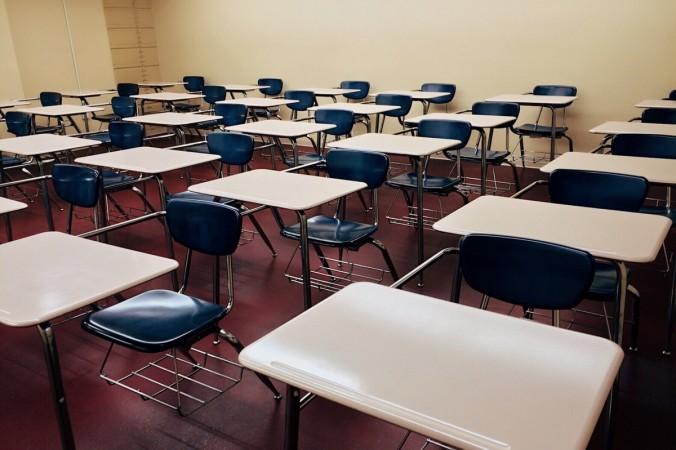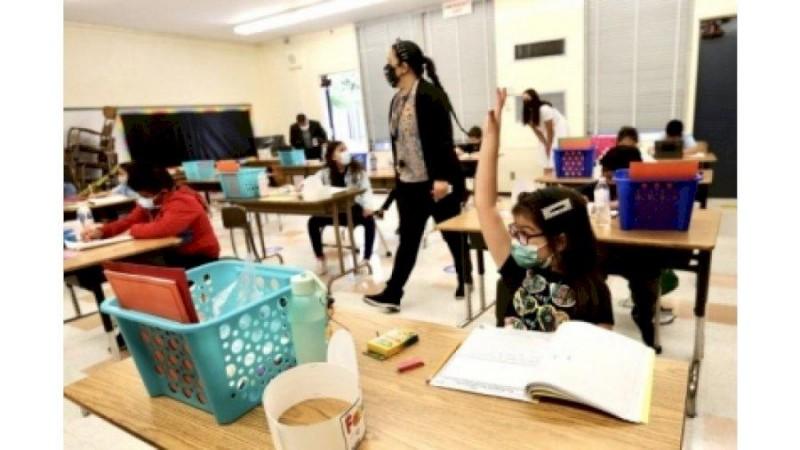There is not a single industry or any one individual not affected by the Covid-19 pandemic. The face of education has already transformed beyond recognition, so it is but obvious that when offline classes do resume; things won't be the same ever.
Apart from taking administrative measures like vaccinations certificates of parents, the schools will need to make classrooms Covid-safe. Open windows are a great starting point in the new ventilation guidelines for schools. Followed by good heating, ventilation, and air conditioning, collectively referred to as HVAC. However, if the researchers at MIT are to be believed, that's not enough.

A new study from researchers at MIT shows how specific classroom configurations may affect air quality and necessitate additional measures, beyond HVAC or open windows to reduce the spread of aerosols. Those tiny virus-carrying particles are primarily responsible for the spread of SARS-CoV-2 and can stay suspended in the air for hours.
Leon Glicksman, an MIT architecture and engineering professor who is also the co-author of the new paper detailing the research, said, "There are sets of conditions where we clearly found there's a problem, and when you look at the predicted concentration of aerosols around other people in the room, in some cases it was much higher than what the standard models would say."

The study further shows that some circumstances can create a concentration of aerosols in quantities that can be problematic. The aerosols under such circumstances range from 50 to 150 per cent higher than the standard baseline concentration that experts consider as "well-mixed" indoors air. Glicksman, who has been studying air circulation issues for decades, further adds, "It gets complicated, and it depends on the particular conditions of the room."
The paper, titled "Patterns of SARS-CoV-2 Aerosol Spread in Typical Classrooms", appears in the advance online form in the journal Building and Environment. The authors of the paper Gerhard K. Renchken and Emma K. Rutherford are MIT undergraduates who participated in the research.
SARS-CoV-2 is the virus that causes Covid-19 and can stay suspended in the air for many hours. It is thus largely transmitted via aerosols in an airborne manner. Many indoor settings with a large number of people and limited airflow, including classrooms, could thus be a breeding ground for the spread of Covid-19. These indoor spaces could contain very high concentrations of aerosols exhaled by infected individuals.
HVAC systems and open windows may help create, "well-mixed" conditions, but in some cases that may not be enough and additional ventilation may be required.
The study, in detail
To conduct the study, the researchers used sophisticated simulations of air flow to examine 14 different classroom ventilation scenarios. Nine of them involved the HVAC systems and five involved open windows.
One ideal scenario involved fresh air entering a classroom near ground level and moving steadily higher, until it exits the room through ceiling vents. This process is aided by the simple scientific fact that hot air rises and people's body warmth naturally generates rising "heat plumes," which carries air towards ceiling vents, at the rate of about 0.15 seconds.
Given ceiling ventilation, then, the aim is to create upward vertical air movement to cycle air out of the room, while limiting horizontal air movement, which spreads aerosols among seated students.
This is why masks are a savior
Masks limit this horizontal speed of exhaled aerosols. They keep exhaled particles near heat plumes so the aerosols rise vertically, as the researchers observed in their simulations. Normal exhaling creates an aerosol speed of 1 metre per second, and coughing creates still higher speeds. But masks keep these speeds much lower.
Glicksman adds, "If you wear well-fitting masks, you suppress the velocity of the exhaled breath to the point where the air that comes out is carried by the plumes above the individuals." However, that will not be the case if the mask is loose or not well-fitted.
But, there's a problem
In their simulations that focused on closed windows and HVAC use, airflow problems emerged in a simulated classroom in winters. In this case, because cold air near the windows naturally sinks, it disrupted the overall upward flow of classroom air, despite people's heat plumes.
In such a scenario, someone infected with Covid-19 sitting near a window would be particularly likely to spread their aerosols around. But there's a fix. Placing heaters near the cold window limits their impact on classroom airflow.
There's another problem
Horizontal air movement from open windows that aligned with seating rows created significant aerosol spread. Installing window baffles or fittings that can be set to deflect the air downward. This way, the cooler fresh air will enter the classroom near the feet of those inside and help generate a better overall circulation pattern.
Bring in clean air from outside near the feet and then start a movement of displacement ventilation. Everything comes at a cost. The more outside air you bring in, the lower the average concentration of these aerosols will be," says Glicksman but adds, "But there's an energy penalty associated with it." Eventually, there's no one simple recipe for increased and displaced airflow. "What we've done is a limited study for particular forms of geometry in the classroom."













